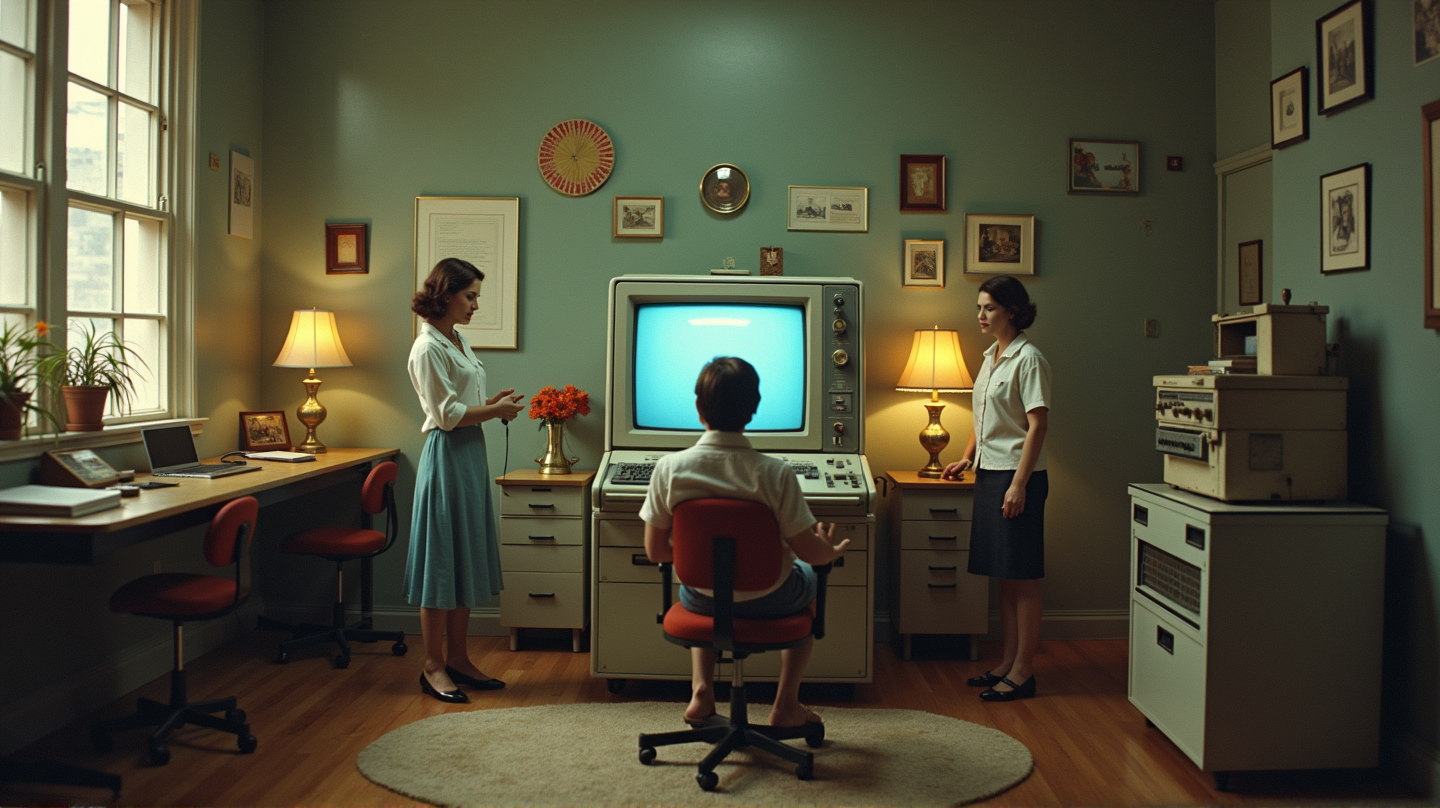The Age of Computation Meets Broadway: How a Comedy Turned Tech Angst into Laughter
In 1955, William Marchant's play 'The Desk Set' cleverly used romantic comedy to address the fear of computers automating humans out of jobs.

What if computer history was played out as a romantic comedy? In a delightful twist, the 1950s Broadway stage brought this vision to life with William Marchant’s play, The Desk Set. According to MIT Technology Review, Marchant cleverly juggled technology and humor, addressing the decade’s pervasive fear that “electronic brains” could automate humans out of jobs.
Broadway and the Electronic Brain
Taking center stage in 1955, The Desk Set introduced audiences to the intriguing juxtaposition of human and machine. The storyline revolves around Bunny Watson and her team of female researchers at the fictional International Broadcasting Company. When engineer Richard Sumner introduces Emmarac, the “electronic brain,” a whirlwind of emotions and antics unfolds. Sumner sees Emmarac as a symbol of efficiency, while Watson fears it as a harbinger of unemployment.
Technological Humor on Stage
Marchant brilliantly captures the societal ambivalence toward computers by blending comedy with genuine fears. Throughout the play, Watson’s quick wit and Emmarac’s quirks become central to the comedic narrative. This interplay encourages audiences to reflect on the promise and peril of technology while indulging in laughter.
The Economic Reality of the ‘50s
While audiences reveled in the antics on stage, the reality was that the computing industry was still struggling to find profitability. Manufacturers operated at great losses to maintain technological prestige. Despite this, the play highlighted the broader societal concern about machines replacing middle management—a reflection of the anxieties of the American workforce.
Change in the Air
For many, the figure of the computer conjured images of automated futures where human judgment became obsolete. Howard Gammon’s advocacy for automation in managerial tasks fueled this fantasy. However, Marchant’s comedy negated such dire predictions by illustrating an alternative narrative where humans and machines collaborate rather than compete.
Turning Threats into Opportunities
In an unexpected comedic twist, the play evolves to show that machines don’t replace human ingenuity but complement it. As Emmarac bumbles through its programmed tasks, it becomes clear that human creativity and spontaneity cannot be easily replicated. Watson’s resolving Emmarac’s malfunction with a hairpin reflects human adaptability, turning a potential threat into a partnership for progress.
A New Beginning in Comedy
As the curtain falls on The Desk Set, the resolution between man and machine suggests a harmonious coexistence. The play’s comic treatment of an electronic brain entertains the possibility of a bright technological future, despite initial reservations. For audiences, the message is clear: laughter and a touch of levity can transform our relationships with technology.
In the end, Marchant’s work not only entertains but allows us to embrace computing as a companion in our workspaces and lives. Much like the characters on stage, we too can find humor and opportunity amidst the uncertainties of progress.





